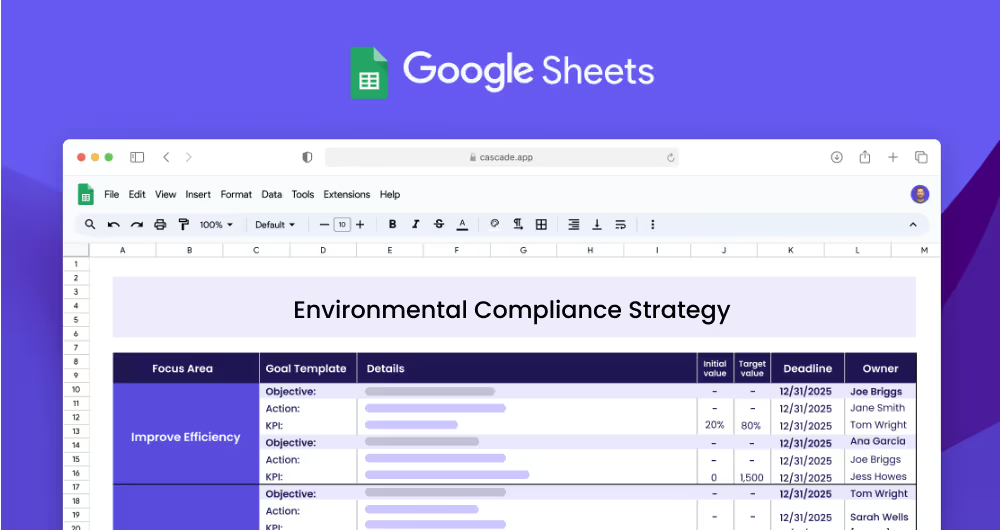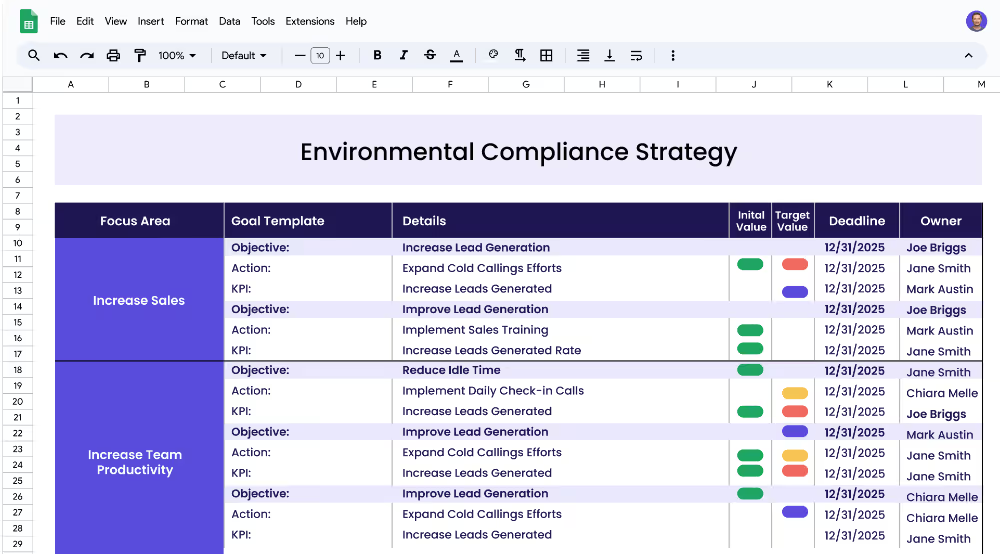An Environmental Compliance Strategy is a plan that organizations create to ensure they are meeting all environmental regulations, laws, and standards. It is a comprehensive plan that addresses environmental impact, sustainability, and other related requirements and objectives. The strategy outlines the goals and objectives of the organization and how they will be achieved through projects and initiatives.
Each focus area has its own objectives, projects, and KPIs to ensure that the strategy is comprehensive and effective.
The Environmental Compliance Strategy template is designed for organizations who are looking to create an effective and comprehensive strategy to ensure compliance with environmental regulations and requirements. This template provides the basic framework and guidance for organizations to achieve their environmental goals.
Within the Environmental Compliance Strategy template, focus areas refer to the broad topics or areas of interest related to environmental compliance that the strategy seeks to address. Examples of focus areas could include air pollution, waste management, environmental impact, and sustainability.
Objectives are the goals that an organization sets to achieve within a particular focus area. These objectives should be specific, measurable, achievable, relevant, and time-bound. Examples of some objectives for the focus area of Environmental Compliance could be: Reduce Environmental Impact, and Improve Recycling Practices.
KPIs, or Key Performance Indicators, are the metrics that an organization will use to measure their progress in achieving their environmental objectives. These KPIs should be measurable and have an initial value and target value. For example, an organization could set a KPI to reduce nitrogen dioxide levels by 10%.An example of a KPI for the focus area of Environmental Compliance could be: Reduce Water Usage by 15%.
Projects are the initiatives or programs an organization will undertake in order to achieve the KPIs set for each objective. These projects can range from implementing sustainability practices to increasing air quality monitoring. It is important to ensure these projects are specific and measurable.
If you’re ready to accelerate your strategy and see faster results, consider using Cascade Strategy Execution Software. Unlike spreadsheets, Cascade provides a streamlined platform designed to help you create, track, and execute your strategy with ease. Sign-up for free or book a demo with one of our strategy experts to get started today!


